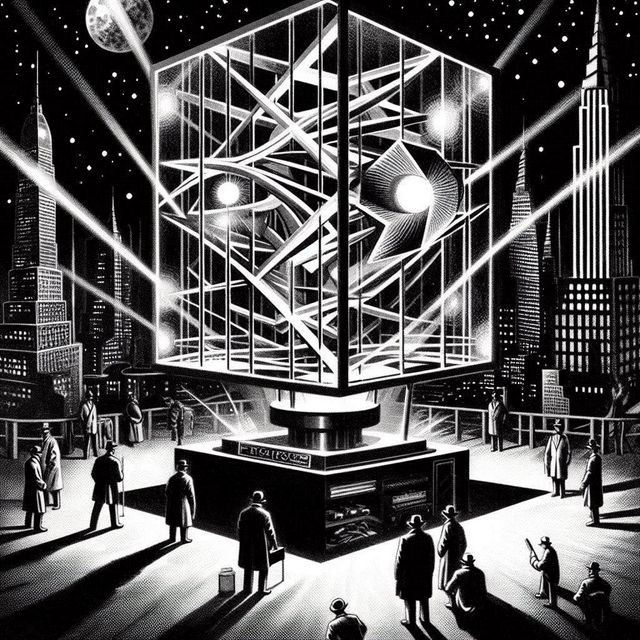-
Vijay Fafat
- Published on
Story of a mathematics professor who theorizes that 4-dimensional objects should be casting 3-dimensional shadows and such shadows should be viewable by specially made mirrors. Dutifully, element number 95, with the aid of heavy doses of electricity and prismatic shapes, starts showing solid, dark, people-devouring shadows in New York. The effect is confined only to the Manhattan area, which is then sealed off in perpetuum. The narrator theorizes that perhaps the 4-D universe intersects ours only in the New York area (no, honestly!).
The story is very poorly written and riddled with errors (“2-dimensional objects cast 1 dimensional shadows”), misstatements (“it had a current of X volts”) and clichés (the mathematician as the world’s foremost authority even though he speaks like a third-grader and has to “experiment with cubes, pyramids, tetrahedrons, parallelepipeds, cones and other geometric solids, by themselves and in combination through endless patterns of crystal” to realize that “it is physically impossible to arrange four right angles at right angles to each other”)
As a bit of a stretch, I noticed one cute coincidence. In versions of superstring theories with the E8 X E8 symmetry, each symmetry represents a shadow universe with respect to the other, linked only gravitationally. In 1984, Green and Schwarz paved the way for serious consideration of SUSYs by carrying out a deep calculation whose answer had to be 496 for all anomalies to cancel. Well, in this story, the narrator glimpses the 4-D universe which is casting the shadows “only for a second, the prisms whirling through the complex variations made possible by a sequence of 496 numbers…”

